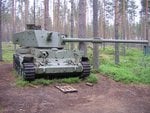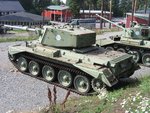- Thread starter
- #41
yulzari
Tech Sergeant
The tank 6 pounder was always expected to support infantry with HE but the effectiveness of HE is a function of the size of the HE charge which is itself a function of the size of the projectile, thus a larger bore gives a better HE result. Artillery had established before WW1 that 75mm was really the lower worthwhile limit (though horse drawn field guns and mountain guns needed low weights so were often smaller). Hence we saw the efforts in the Mediterranean to fit surplus Sherman 75mm guns into Churchills as the doctrine was that infantry support with HE was the prime role of tanks.
The telling thing is that they retained a proportion of 6 pounders to cope with enemy armour. My hypothesis is that it would only take a small improvement in the anti armour capacity of the 6 pounder for it to do the same in NW Europe, save building Challengers and Fireflies and concentrate on progressing the full 17 pounder tank design into service before the end of 1944.
The telling thing is that they retained a proportion of 6 pounders to cope with enemy armour. My hypothesis is that it would only take a small improvement in the anti armour capacity of the 6 pounder for it to do the same in NW Europe, save building Challengers and Fireflies and concentrate on progressing the full 17 pounder tank design into service before the end of 1944.


